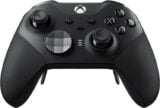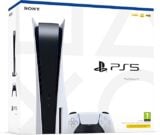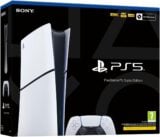Hands-On: PlayStation VR2 is a leap forward in comfortable, immersive VR
4K visuals and Sense controllers bring high-end VR experience to PS5 owners

PlayStation VR2 is finally launching next month, conveniently just as PlayStation 5 consoles are finally easier to get hold of after two years of stock shortages. But will it be worth the wait and price?
After getting to spend time with PlayStation VR2 at a hand-on event recently, it’s clear the headset is a huge leap from Sony’s predecessor released back in 2016. It may be hard to top the game-changing experience of entering VR for the first time, but the improvements of this new version make for a far more comfortable and, as a result, more immersive VR experience.
PS VR1 already had a comfortable design compared to the competition, and PS VR2 simply iterates on that. You place the headset over your head and then slide the screen towards your eyes at a distance that suits you, making it especially comfortable for users who wear glasses.
Sony has even managed to make this headset lighter than the previous one, and again that weight is supported by the head strap so you don’t feel it on your nose or forehead. At the back of the head strap is also a button you can turn to tighten the strap around your head to keep the headset in place.
Besides how it feels on your head, the big difference, of course, comes from what you can see inside. With a 4K OLED HDR display, VR images are ridiculously crisp, while an increased field of view of about 110 degrees, up from PS VR1’s 100 degrees, as well as improvements to the light seal cutting out light pollution beneath our eyes, makes for even greater immersion.
Just as important as what you can see in VR is how you can interact with it. Whereas PS VR1 made do with a pair of Move controllers from a previous generation to simulate motion controls, PS VR2’s Sense controllers have been designed specifically for the hardware, which are also included with the headset, going some way to justify its price.
At first glance, they’re quite similar to the Quest’s Touch controllers, with slightly larger rings used for tracking hand movement, and each with two triggers, with one used primarily for grabbing while the other is used for firing.
The presence of analog sticks, not present in the Move wands, also means it’s possible for us to actually move the vehicle we’re in with stick controls, whereas in-game this is done by putting your hand on a lever. Obviously, it’s more immersive to be simulating physical actions in VR but in this case it would mean keeping our hand up in the air without leaning on an actual lever, which would get tiring after a while.

While we’ve been used to the Quest’s controllers, it does take a while to adjust to both the Sense controllers’ button layout, with the Menu and Create buttons placed quite far from the control stick on the edge.
Unlike the Move wand, which was originally designed as a single controller, the traditional PlayStation face buttons are also split between the pair, with Triangle and Square mapped to the left while Cross and Circle are to the right (both, however, have the PlayStation symbol, which like with DualSense, is pressed to access the Control Centre or held to enter the Home Screen).
Fortunately, rather than stumbling our fingers over the buttons obliviously, we’re able to check the controller layout as well as our immediate surroundings without taking off the headset every time thanks to PS VR2’s passthrough mode. This is activated just by pressing a button located beneath the visor (a similar spot where the button for sliding the screen was on PS VR1, which is now located on the top).
“The onus is going to be on Sony’s first party studios to deliver some real VR blockbusters that are going to make the investment not just feel worthwhile, but essential.”
Since we tested PS VR2 while seated in front of the monitor, we didn’t really examine the cable that the headset is tethered to, although it’s evidently a much simpler set-up than PS VR1, with just one lengthy USB-C cable that can be plugged at the front of the PS5. Similarly, the Sense controllers are also charged using USB-C unlike micro-USB ports in the ancient Move wands, while also an improvement over the Quest Touch controllers that rely on batteries.
While PS VR2 may just seem like another high-end VR headset that currently exists in the PC VR market, there are a number of features exclusive to Sony’s headset. The Sense controllers include adaptive triggers and haptics incorporated in the DualSense controller, going further by adding haptics to the headset as well.

Another major feature we weren’t able to try was eye-tracking, so we still had to rely on tilting our head to look around. The eye-tracking technology is what allows for Foveated Rendering, a rendering technique where the hardware can reduce its workload by only rendering what the eye sees, allowing for smoother performance and higher quality visuals and effects in what the eye does see.
We left our hands-on pleased by PS VR2’s comfort and convenience, a huge improvement over its predecessor. But given the high price tag, requiring an equally pricey console (although it should be noted it’s still relatively affordable compared to other high-end VR headsets on the market), it does mean that the onus is going to be on Sony’s first party studios to deliver some real VR blockbusters that are going to make the investment not just feel worthwhile, but essential.














